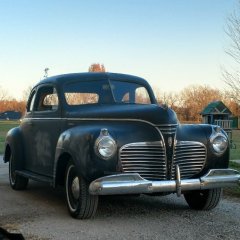Search the Community
Showing results for tags 'clock'.
-
Hi I am looking for a Dash Clock for my 1941 Dodge D19 Business Coupe. It is placed in the glove box cover. I have googled for pictures to show here... but I was not successfull ;-) Maybe another clock from Plymouth or DeSoto would also fit? Does anyone have one for sale or can poin...
-
So, first post here (wooooo) - what I wanted to try asking is if anyone here knows if there's a size difference in the clocks that ended up in P11/12's and the P15's? In pictures, they look about the same size, but I have heard people say that they are not compatible and one won't fit the o...
-
Pulled out the radio and glove box yesterday to give a cleaning and test... clock I didn't test yet, can hear something rattling inside, small but still a rattle. Is there a trick to removing the front lens? Well, more so removing the small dial for setting the time? Looks like a slot head, with...
-
Hello all, as I got here lot's of great tips I maybe have one for you. When I bought my Dodge, the speedometer and clock were really destroyed. The printed surface was deteriorated and also the printed letter of the clock and speedometr face dropped off. When I decide to restore it I tri...
- 16 replies
-
- 4
-

-
- clock
- speedometer
- (and 5 more)
-
Well, I finally got 'er done. Thanks to Keven's help my long time dream to create a clock from a spare speedo has come true. This has been in the works in my head for several years, but I didn't have a good source for someone to create the clock face from a speedo face. Keven came to the rescue and...
-
Anyone ever used one of these kits to convert their p15 Clock to a quartz movement? I'm unsettled as to whether I should replace guts or send it out for repair? I don't think this clock is original to the car and think one of the PO's may have installed it due to the fact I can't find any power feed...








